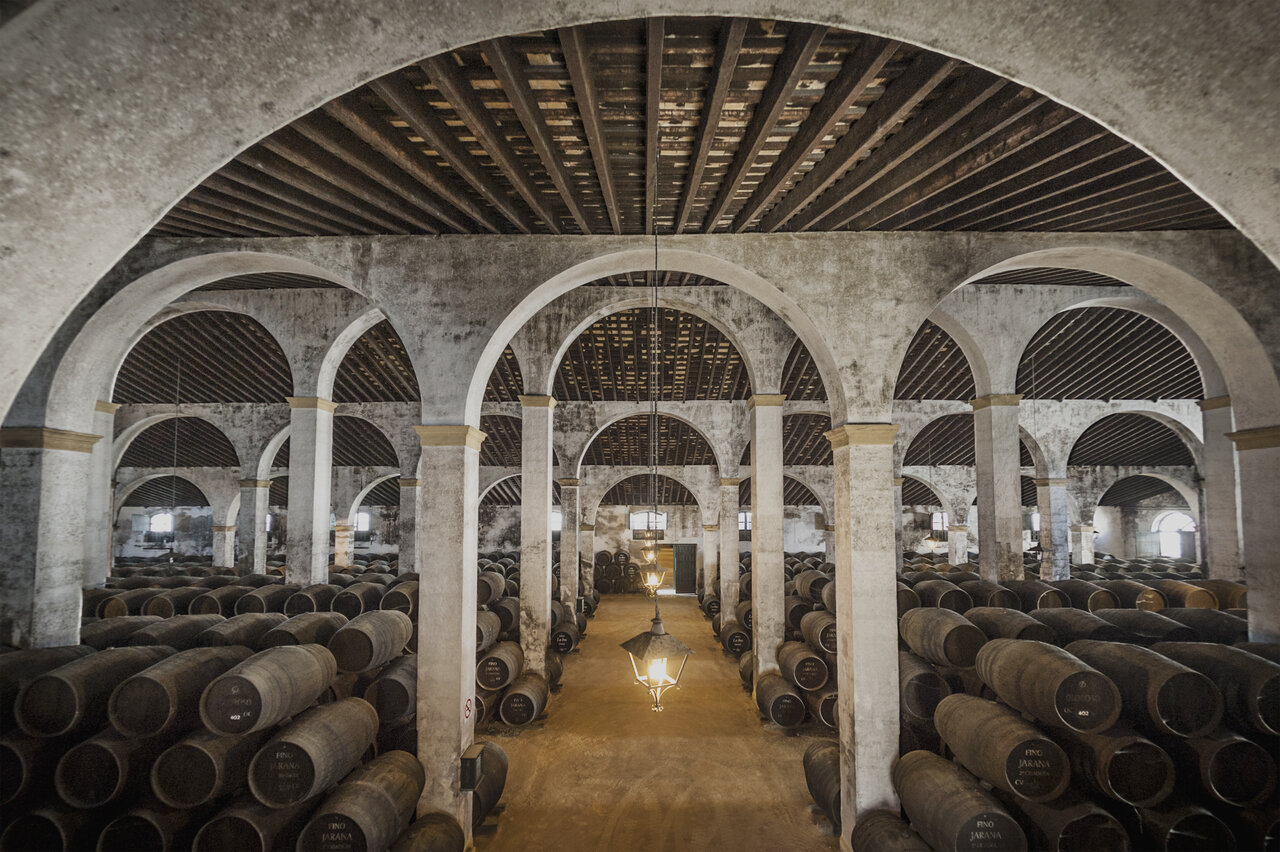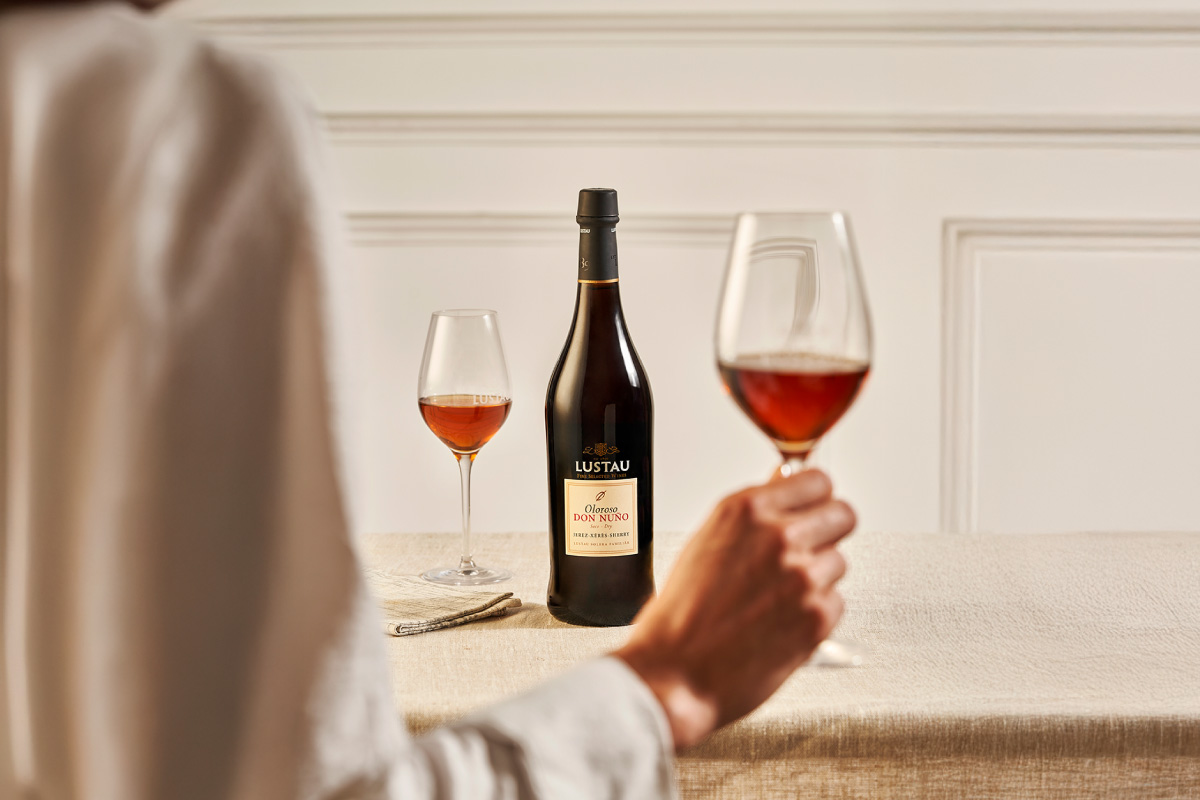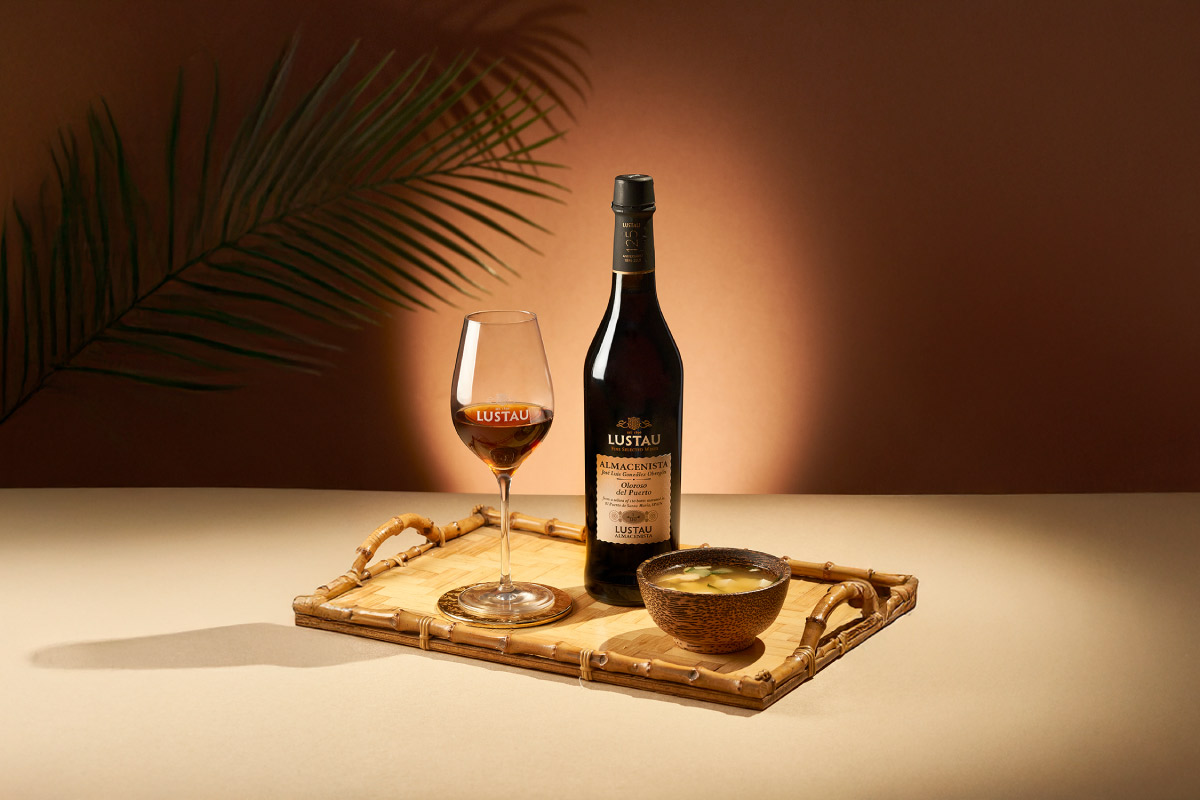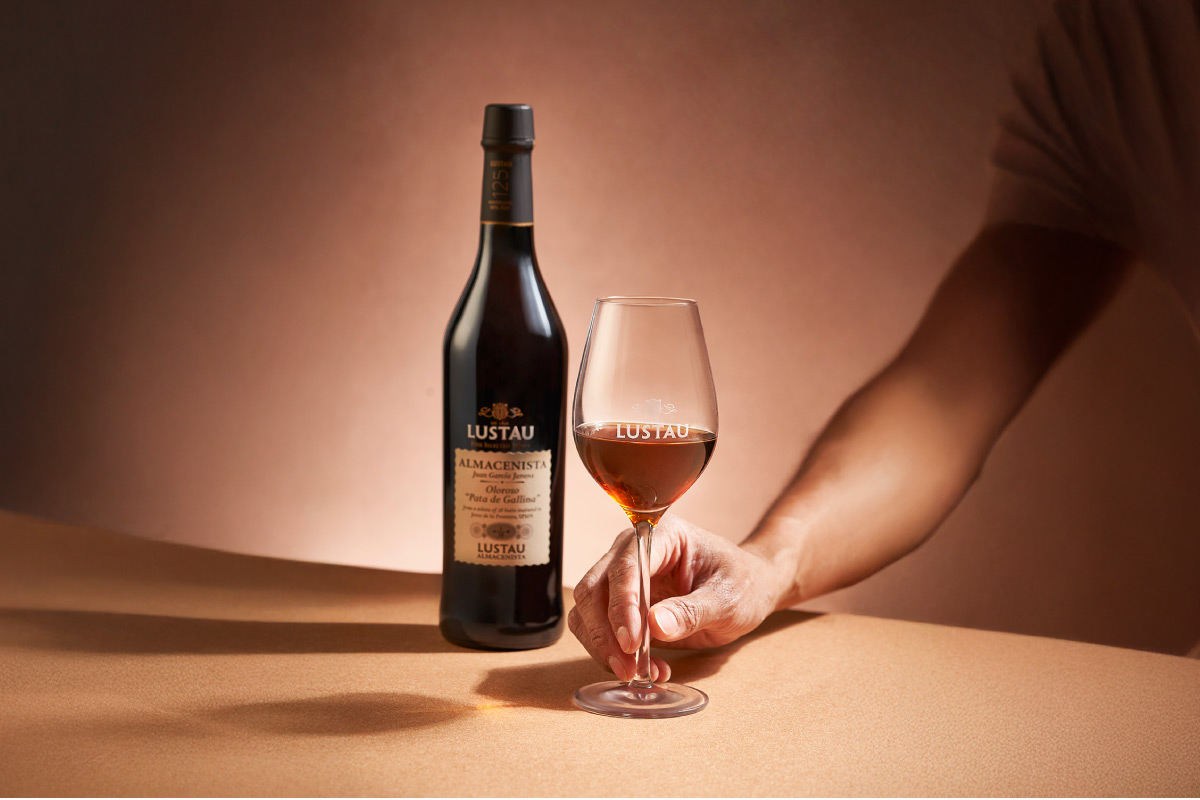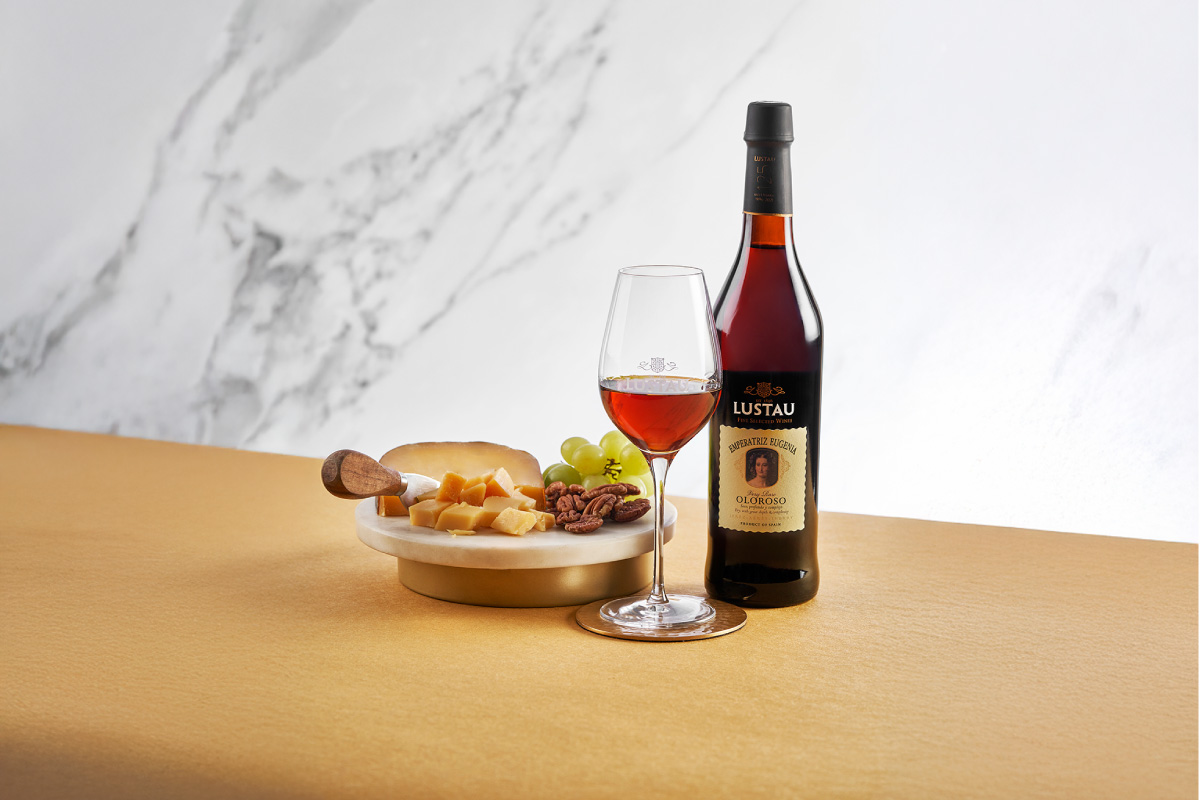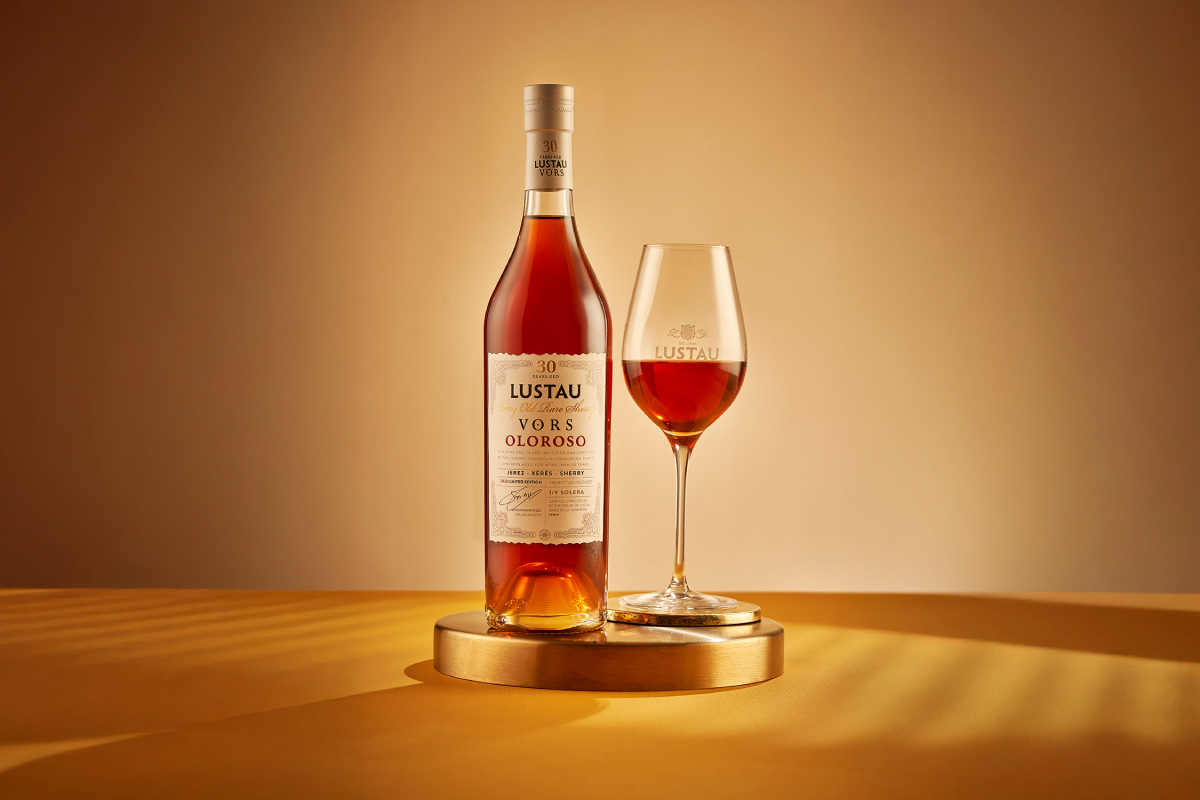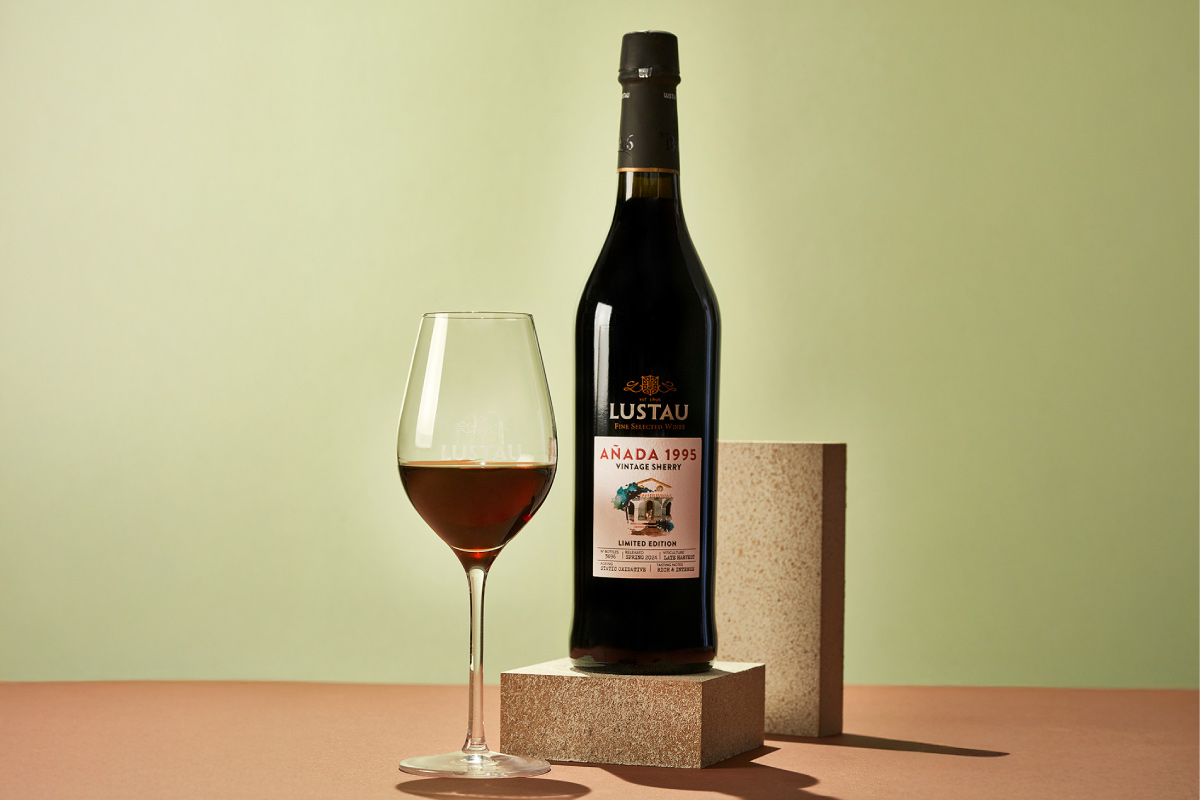Oloroso is one of the most distinctive styles of sherry wine, known for its deep amber color, intense aromas, and rounded, full-bodied profile. Unlike fino or manzanilla, which constantly age under a layer of flor yeast, oloroso undergoes oxidative aging, giving it a multifaceted personality and identity.
Oloroso stands in contrast to amontillado, which experiences both biological and oxidative aging, and palo cortado, which shares aromatic qualities with amontillado but has a mouthfeel closer to oloroso. The defining aging path of oloroso is its long, slow exposure to oxygen, resulting in a complex but fresh character.
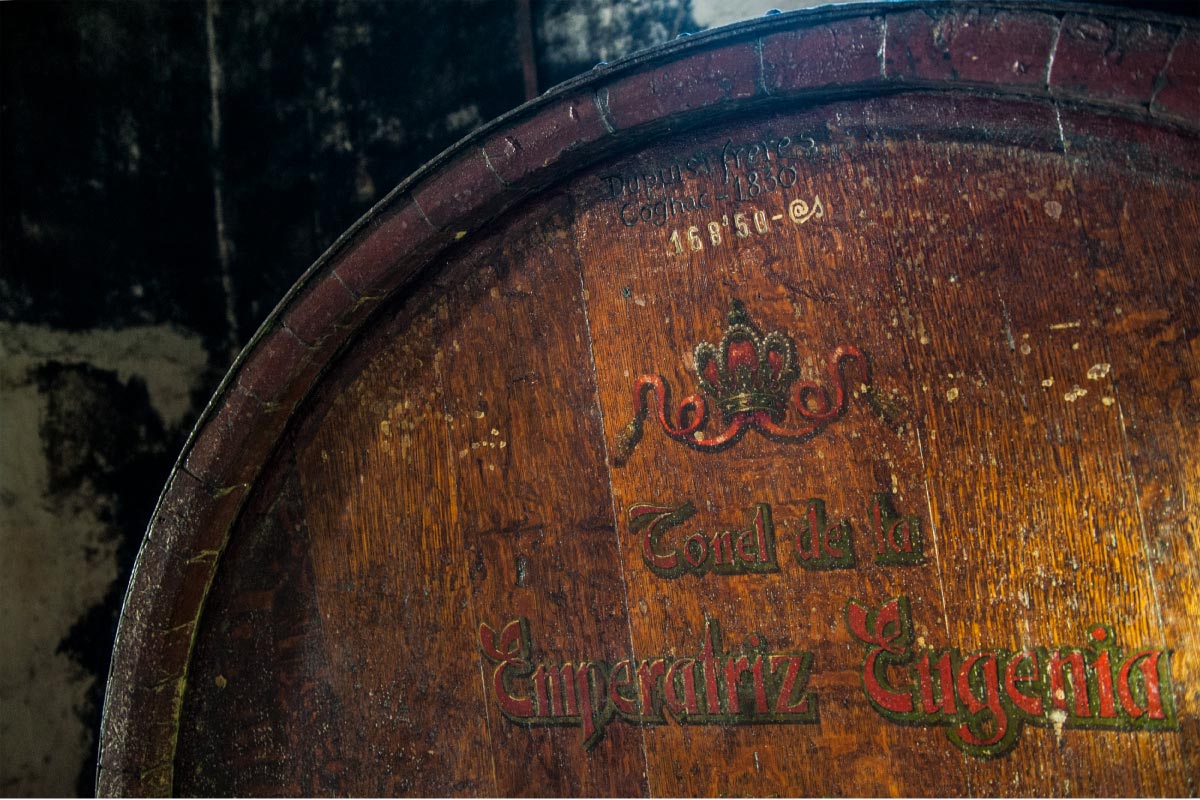
In Depth: Palo Cortado (Everything About Palo Cortado Sherry)
THE ORIGIN OF THE NAME “OLOROSO”
The name “oloroso” originates from the Spanish word “olor,” meaning “aroma” or “fragrance.” Spanish, “oloroso” is an adjective meaning “fragrant” or “scented,” a fitting descriptor for a wine renowned for its highly pronounced aroma, which includes noble wood, nuts, and a subtle citrus background. The term has since become synonymous and a perfect representation of this aromatic and expressive style of wine.
WHAT DOES OLOROSO SYMBOL COME FROM?
Historically, oloroso was recognized early on in wine classification for its distinctively strong aromas and was thus named accordingly to the tactile sensations it generates in the palate. The symbolism of this expression is deeply rooted in the traditions of the region, also in its visual representation.

Historically, barrels (nowadays stainless steel tanks) containing young palomino wine were marked with specific chalk symbols by“capataces” to indicate, first the wine’s rich, rounded personality and its further oxidative aging. Unlike fino and amontillado, which were often marked with a single vertical slash (palo), oloroso casks received a distinct notation—typically a circle or an “O”—signifying that the wine would bypass biological aging and develop purely through oxidation.
You can learn when and how the word “sherry” comes from. This article answers much more than that.
This naming/classification system, rooted in both tradition and expertise, definitely highlights the complexity and precision required to craft a wine like oloroso. This seemingly irrelevant step sets the base for the elaboration of a wine that defines a long, consistent aging process as part of its uniqueness and differentiation.
THE WINEMAKING PROCESS FOR OLOROSO
The elaboration of oloroso is a meticulous process that combines oxidation, care, and time. Unlike biologically aged sherries, oloroso follows a purely oxidative path, requiring different environmental factors and different tempo. From grape selection to the aging process in the solera system, each step plays a crucial role in shaping this bold and aromatic wine.
GRAPE SELECTION AND INITIAL FERMENTATION
Like other dry wines from the Jerez region, oloroso is exclusively made from palomino grape, a variety known for its immense versatility (hence the diversity of dry sherry wines expressions) and ability to express terroir. Palomino produces delicate yet versatile base wines offering a vast and diverse spectrum of personalities, identities.
Palomino is generally harvested in the middle of summer. After a gentle pressing with a light contact with grape’s skins the juice (known as segundo pie) undergoes fermentation, typically in stainless steel tanks, resulting in a dry, light white wine with an alcohol content of around 11-12% Abv.
Note that there is a very slight difference in base wines used for fino, manzanilla, amontillado or palo cortado. While oloroso is crafted with a second press, allowing the must to stay in contact with skins and seeds (this provides a richer mouthfeel and aging potential) the rest of the dry styles are made of free-run juice (mosto yema).
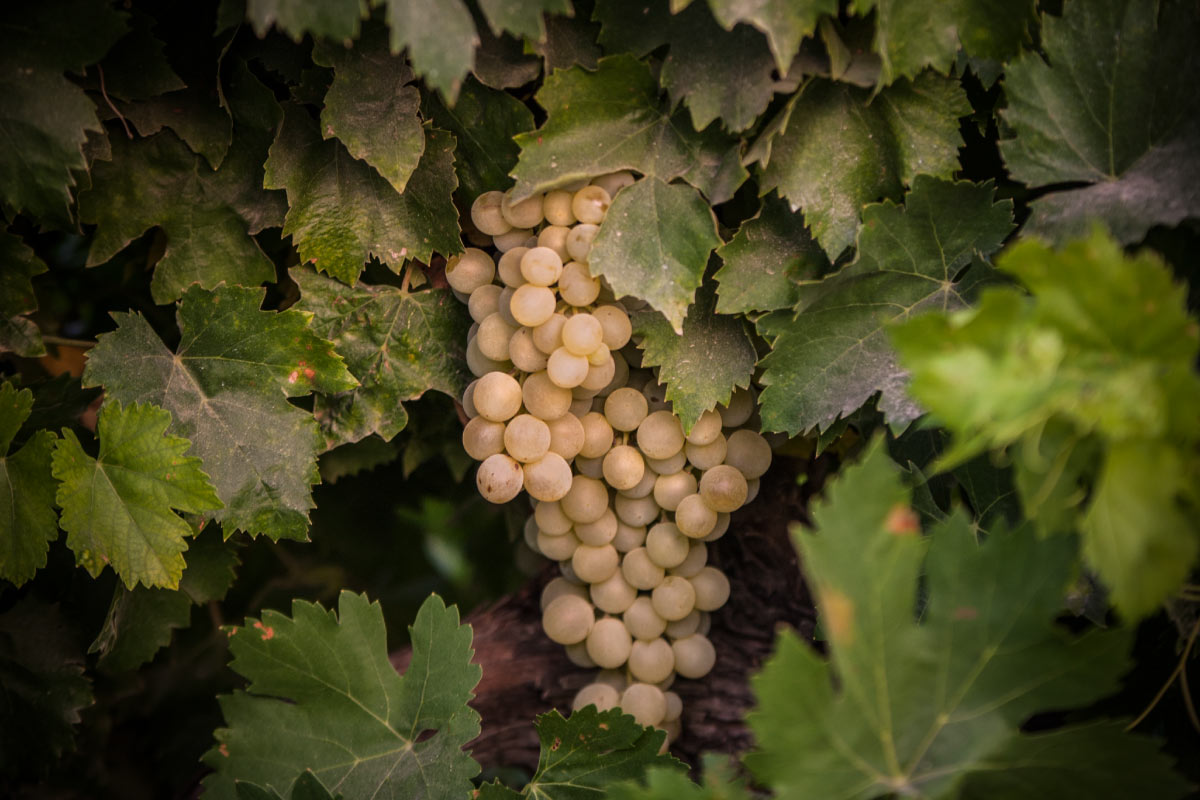
BYPASSING FLOR: INITIATING OXIDATIVE AGING
Oloroso is characterized by an early classification unlike fino or amontillado, which require a second or a third classification before going into the actual aging process. Immediately after fermentation oloroso is fortified to a higher alcohol content (typically 17-18%). to inhibit “flor” development, exposing the wine directly to oxygen from the very beginning.
FORTIFICATION AND THE PATH TO OLOROSO
Once the must is classified as ideal for oxidative aging, the base wine is fortified with a high quality, neutral grape spirit. Fortification process not only stabilizes the wine (preventing “flor” from appearing on the surface of the wine) but also enhances its ability to age gracefully over a long period of time. The fortification level is crucial, pushing the wine entirely towards a deep, rounded and aromatic personality.
OXIDATIVE AGING IN THE SOLERA SYSTEM
Olorosos (and the majority of wines in the Jerez region) are then aged in the traditional solera and criaderas system, the dynamic aging method created in the DO centuries ago . Younger wines are progressively blended with older ones, ensuring consistency and complexity unparalleled to the rest of the wine world.
Because oloroso lacks the protective “flor” layer, it interacts with oxygen throughout its aging process, leading to a concentration of color, flavor and aroma.
FINAL CLASSIFICATION AND BOTTLING
After extensive aging— always decades—this style of wine reaches its final classification. Capataces assess its concentration, balance, acidity and complexity before bottling. Some oloroso may be sweetened with pedro ximénez to create a brand new style and personality (cream). Some others retain its bold oxidative character and are eventually bottled unblended. The finished oloroso is bottled with minimal or no filtration and treatment, to preserve its unique character and also respect the genuineness of its identity.
KEY CHARACTERISTICS AND FLAVOR PROFILE OF OLOROSO
AROMAS, TASTING NOTES, AND MOUTHFEEL
Oloroso is known for its powerful aromatic profile, featuring notes of roasted nuts (walnuts and pecans), smoked wood, salted caramel and sometimes a subtle citrus fruit background. On the palate, it is full-bodied, deep, and velvety, with flavors of leather or tobacco. The oxidative aging process imparts a long, lingering finish with a firm balance of acidity and savory depth.
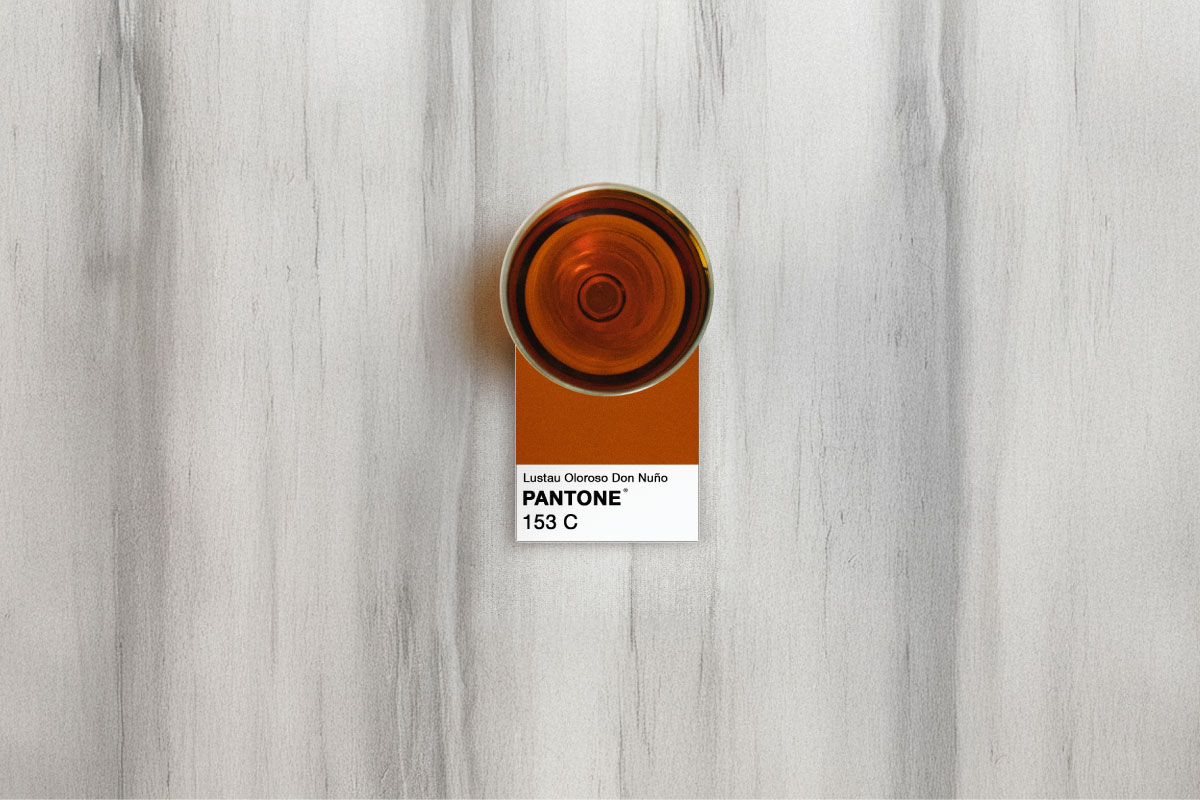
COMPARING OLOROSO TO AMONTILLADO AND PALO CORTADO
Due to the oxidation effect oloroso shares some characteristics with amontillado and palo cortado, each style has its own nuances:
Amontillado starts its aging under “flor” before transitioning to oxidative aging, resulting in a sharper texture with both caramel, nutty and yeasty notes.
Palo Cortado is an enigmatic style that bridges the gap between amontillado and oloroso, combining the aromatic finesse of amontillado with the robust body of oloroso, creating a style that’s both elegant and powerful.
Oloroso is therefore the most complex and full-bodied style with deep oxidative flavors and no trace of “flor” yeast influence.
LUSTAU OLOROSO COLLECTION
Lustau is respected for its diverse and versatile range of styles organized in different collections designed under certain concepts, and profiles; they are suited for any palate. Lustau Oloroso offerings explore different expressions of this oxidative-aged wine, showcasing variations in aging, intensity, and complexity.
Despite all expressions are defined by Lustau’s accessible style each bottling provides different insights into the craftsmanship behind oloroso sherry and its evolving character over time.
FOOD PAIRINGS AND SERVING SUGGESTIONS FOR OLOROSO
A truly captivating wine, oloroso stands out for its intense, aromatic character and depth of flavor, making it a versatile companion to a variety of culinary applications. However, serving it correctly is essential to fully appreciate its complexity and get the most out of it.
This wine should be served slightly chilled, ideally at a temperature of 13–14°C (55-57°F) to enhance its aromatic personality…
Once opened, palo cortado can be stored for up to three months if properly sealed and kept in the refrigerator, although its vibrant character is best appreciated within the first few days). Unopened bottles should be stored upright, away from direct sunlight and temperature fluctuations, to preserve their quality.
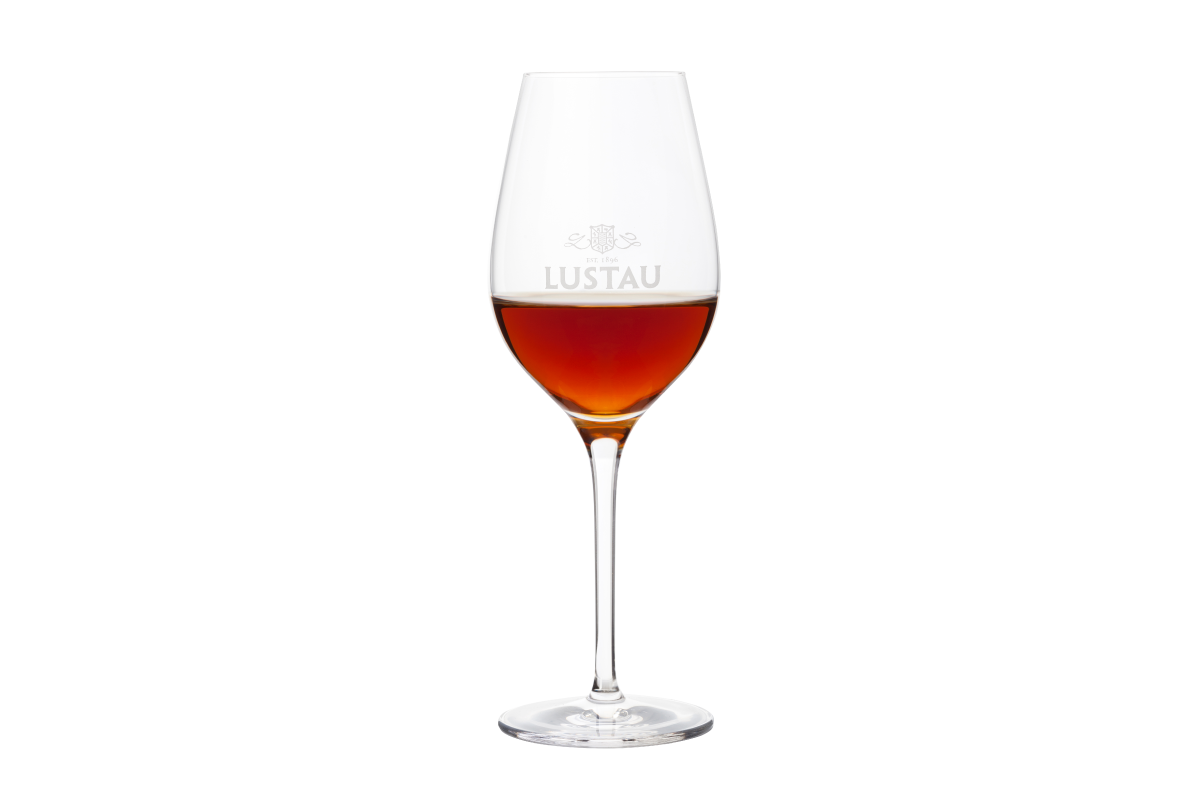
PAIRINGS & CULINARY APPLICATIONS
Oloroso’s vigorous expressiveness extends beyond the dining table, making it a perfect companion for a variety of occasions and moods. Its high acidity, elegance and depth allows it to shine as a sophisticated wine to pair with ramen or the base ingredient in a low abv cocktail version like the Sherry Old Fashioned. Ideal for intimate gatherings, reflective moments, or even as a pairing with music—think hard rock or grunge—it invites you to explore its depth in any context.
Whether savoring it with food, enjoying it as part of an self-crafted cocktail, or sipping it during a quiet evening of reading or pottery session, oloroso transforms every moment into an experience of refined indulgence.
And for those looking to explore creative and unexpected pairings, discover how Lustau Olorosos create a twist in sensations with everyday dishes (or other more elaborate ones) with these inspiring combinations. Click on the visuals to discover more about the pairing and cocktail ideas!
